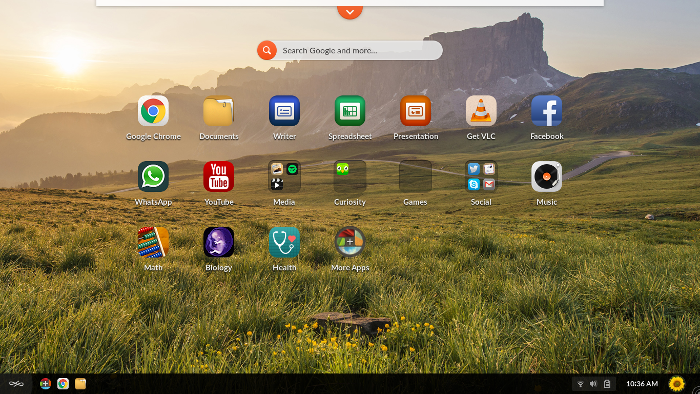

- Lightweight linux distro 2016 install#
- Lightweight linux distro 2016 full#
- Lightweight linux distro 2016 plus#
- Lightweight linux distro 2016 windows#
However, to ensure smooth running, try to use a machine with at least 1GB of RAM. The most recent release of Lubuntu has now lowered the minimum required RAM to run the OS to 500MB. This doesn't mean that Lubuntu is lacking, though – it's based on the latest Ubuntu release, so it's a proper modern Linux distro – it's just shed all unnecessary weight, in the manner of a rally car having all but one of its seats removed. The most recent releases have also reverted back to using LibreOffice rather than Abiword for word processing. It features alternative and less resource intensive apps where possible. It comes with a plethora of office, internet, multimedia and graphics apps, along with a wide assortment of useful tools and utilities.Īs a lightweight distro, Lubuntu focuses on being fast and energy efficient. The default desktop is based on LXQt, which is far less resource hungry than mainstream Ubuntu's Gnome 3 desktop. Lubuntu is primarily designed for older machines. The 'L' in Lubuntu (opens in new tab) might as well stand for lightweight, as the distro unashamedly appeals to those Ubuntu users who are looking for an OS which requires fewer resources than most modern distros, but doesn't force you to compromise on your favorite apps. The distro has dropped support for 32-bit and is only available for 64-bit systems. It also supports multi-booting so you can keep your existing OS if you wish.
Lightweight linux distro 2016 install#
Linux Lite can boot from a Live medium such as a USB stick or CD, or install to your hard drive. Try it on modern hardware and you'll be amazed at just how quickly it runs. That said, this shouldn't be too much to ask of any computer made in the last decade. There's also a special ‘Lite Upgrade’ utility.ĭespite its name, this distro isn't the least resource hungry out there, as it requires both a 1.5GHz processor and at least 1GB of RAM to run smoothly. The OS also includes the zRAM memory compression tool which makes it run faster on older machines.
Lightweight linux distro 2016 plus#
It features familiar tools like Firefox (with built-in support for Netflix), plus VLC Media Player and LibreOffice are preinstalled.
Lightweight linux distro 2016 windows#
It is specifically developed to ease Windows users – particularly those with old machines – into the world of Linux. Linux Lite (opens in new tab) is based on Ubuntu. For example, you can modify different aspects of the desktop’s appearance such as themes, menus, wallpaper as well as configure the antiX ad blocker, image a partition and tweak the automount behavior using the custom modules in the control panel. One interesting aspect of the distro is the home-grown antiX control panel which you use to modify virtually all aspects of your installation. While it bundles the Synaptic package manager, one of the interesting aspects of the distro is the metapackage installer that helps make the distro accessible to new users.ĪntiX boots into a pleasing looking IceWM window manager with icons on the desktop. The distro uses its own repos together with that of Debian’s.
Lightweight linux distro 2016 full#
The full edition of antiX, which uses IceWM together with the Rox file manager, is one of the lightest distros around and yet ships with lots of apps, including both mainstream and lightweight ones, for virtually every desktop task. There's also plenty of documentation accessible from within the desktop itself to assist new users.ĪntiX (opens in new tab) is one of the best options that’ll be content on a computer with very little resources. The distro includes many useful custom scripts and utilities to ease configuration and maintenance of the installation. This is ensured through the lightweight IceWM window manager, along with popular apps such as LibreOffice, making this OS perfect for older machines. Once installed, Absolute Linux is incredibly nimble.

The way Absolute is structured also means that you can add and remove packages from the install media to create a distro which truly suits you, though you'll need some time and experience with Linux if you really want to make the most of this feature. The installer is text-based and there's no Live mode, but nevertheless it's incredibly simple to follow. It's based on Slackware but unlike its parent OS, aims to make configuration and maintenance as simple as possible. Absolute Linux (opens in new tab) is a lightweight distro designed for desktop use, and as such comes preinstalled with the Firefox browser and LibreOffice suite.


 0 kommentar(er)
0 kommentar(er)
